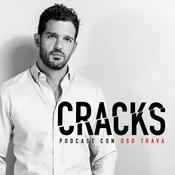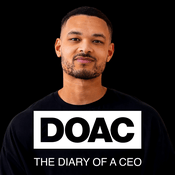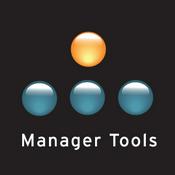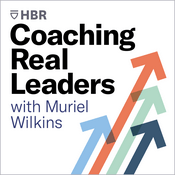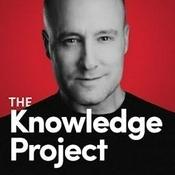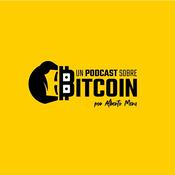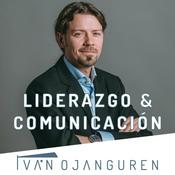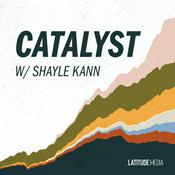Episodios disponibles
5 de 162
- Captura's high-stakes gambleBack in January, Captura CEO Steve Oldham was sitting in a conference room in Hawaii, entertaining reps from the company’s first potential customer. What the customer didn’t know was that Captura’s ocean-based carbon removal pilot –the whole reason for the visit – still wasn’t working. The stakes were high. Steve’s team needed to prove they could pull off a major pilot under intense time crunch — amid broader pressure on the carbon removal sector to show it can scale reliably and fast. So what did it take to install the pilot and win over a first customer? In this episode, host Lara Pierpoint talks with Steve about Captura’s rapid scale-up from a desktop prototype to a 1,000-ton pilot. They also discuss the science behind removing CO₂ from ocean water, and the difficult decisions required to keep the company on track — including walking away from a premier industrial site and racing to rebuild the project half a world away. Credits: Hosted by Lara Pierpoint. This episode was produced by Daniel Woldorff and Erin Hardick. Anne Bailey is our senior editor. Sean Marquand is our technical director. Stephen Lacey is our executive editor. The Green Blueprint is a co-production of Latitude Media and Trellis Climate. Subscribe on Apple, Spotify, or anywhere you get podcasts. For more reporting on the companies featured in this show, subscribe to Latitude Media’s newsletter.--------30:21
- Boston Metal’s path to carbon-free steelThis year in the U.S., steel manufacturers will produce more than 71 million tons of steel – enough to build nearly 200 Empire State buildings. It's a stunning statistic, but not surprising. The steel industry has fueled economic growth and innovation in America since the early 1800s. But for every ton of conventional steel produced, two tons of CO2 are emitted, making the coal industry responsible for about 7% of global emissions. Steel is widely known as one of those "hard to decarbonize" industries. But Boston Metal's innovations are pointing the way forward to a net-zero steel industry that relies on renewable power instead of coal. In this episode, Lara Pierpoint talks with Tadeu Carneiro, CEO of Boston Metal, about the company's first commercial facility in Brazil -- a facility that aims to reach industrial-scale production of critical metals by next year. And Lara asks Tadeu how his team developed and scaled a technology he calls “harder than keeping an ice cream cone frozen in hell.” Credits: Hosted by Lara Pierpoint. Produced and edited by Stephen Lacey and Anne Bailey. Technical direction by Sean Marquand. Stephen Lacey is executive editor.The Green Blueprint is a co-production of Latitude Media and Trellis Climate. Subscribe on Apple, Spotify, or anywhere you get podcasts. For more reporting on the companies featured in this show, subscribe to Latitude Media’s newsletter.--------37:38
- The thermal battery transforming cold storage for India’s dairy farmersIn 2007 Sam White, co-founder of Promethean Power Systems, was traveling through India looking for a rural electrification problem to solve. He and his team had just won a $10,000 grant in an MIT competition, and they wanted to find an industry in India that needed their help. After looking at the sugar industry and the grape industry, they finally settled on dairy. India is the largest producer and consumer of milk in the world, but poor infrastructure makes getting chilled milk from farmer to consumer difficult. Industry standards require milk to be chilled within four hours of milking the cows, or bacteria spoils it. India averages six hours. Sam’s team had found their problem. But it would take years of failed designs to solve it. In the end they perfected a 500 liter tank that could chill a thousand liters of milk – a 300% increase in efficiency from previous designs. Today, Promethean had installed 2800 of those tanks across India. In this episode, Lara Pierpoint talks with Sam about the evolution of Promethean's thermal battery design, the upsides of slow but steady growth in climate tech, and how Promethean dealt with technology copycats in India.--------40:37
- This VC wants climate tech to play hardball in WashingtonClean energy founders love to talk about technology, capital, and scale. But few are prepared for the fourth pillar of success: government. Shomik Dutta, a co-founder and managing partner at Overture VC, learned that lesson firsthand after a career that spanned Obama’s White House, private equity, and venture capital. His takeaway: “If you’re not at the table, you’re on the menu.” Shomik thinks the next generation of climate startups must treat policy as a core competency, not an afterthought. That means building real influence in Washington, developing a muscle for storytelling, and sometimes even instilling a little fear in politicians. It’s a strategy Overture has baked into its investment model. The firm partners directly with Boundary Stone Partners, one of DC’s top government affairs shops, to help portfolio companies navigate regulation and shape outcomes. In this episode, Lara Pierpoint talks with Shomik about how industrial policy is reshaping venture capital, why crypto offers an unexpected lobbying lesson, and how founders can engage the government as a strategic partner— even in this moment of political backlash. Credits: Hosted by Lara Pierpoint. Produced and edited by Stephen Lacey and Anne Bailey. Technical direction by Sean Marquand. Stephen Lacey is executive editor. The Green Blueprint is a co-production of Latitude Media and Trellis Climate. Subscribe on Apple, Spotify, or anywhere you get podcasts. For more reporting on the companies featured in this show, subscribe to Latitude Media’s newsletter.--------48:46
- Shortening the nuclear development cycle from decades to yearsFor decades, nuclear has struggled with cost overruns and delays — Georgia’s Vogtle plant being the latest example. Kairos Power co-founder and CEO Mike Laufer thinks the solution is to flip the script: focus first on non-nuclear demonstrations and then iterate quickly. It’s a counterintuitive and potentially risky strategy . Rapid iteration isn’t the way engineers or funders like the DOE have traditionally developed nuclear plants. Kairos also combined two technologies — TRISO fuel and molten salt — into a first-of-a-kind design. Theoretically it would be safer, but Kairos was also tackling one of the hardest problems in engineering: building a reactor from scratch. After eight years of development, its approach has led to three engineering test units, a novel contracting model with the Department of Energy, and a landmark partnership with TVA and Google to deliver nuclear power to data centers. So how did Kairos pull it off? In this episode, Lara talked with Mike about how Kairos executed its ambitious iterative approach without overextending itself. They also cover why Kairos chose to vertically integrate and build its own in-house machine shop, plus what technical setbacks taught the team. Credits: Hosted by Lara Pierpoint. Produced by Daniel Woldorff and Erin Hardick. Edited by Anne Bailey. Technical direction by Sean Marquand. Stephen Lacey is executive editor. The Green Blueprint is a co-production of Latitude Media and Trellis Climate. Subscribe on Apple, Spotify, or anywhere you get podcasts. For more reporting on the companies featured in this podcast, subscribe to Latitude Media's newsletter.--------47:51
Más podcasts de Economía y empresa
Podcasts a la moda de Economía y empresa
Acerca de The Green Blueprint
We already have many of the climate solutions we need. But scaling them is hard. The Green Blueprint is a show about the people who are architecting the clean economy. Every other week, host Lara Pierpoint profiles the founders, investors, and organizational leaders who are solving complex challenges in the quest to build climate technologies fast.
Sitio web del podcastEscucha The Green Blueprint, SINERGÉTICOS y muchos más podcasts de todo el mundo con la aplicación de radio.net

Descarga la app gratuita: radio.net
- Añadir radios y podcasts a favoritos
- Transmisión por Wi-Fi y Bluetooth
- Carplay & Android Auto compatible
- Muchas otras funciones de la app
Descarga la app gratuita: radio.net
- Añadir radios y podcasts a favoritos
- Transmisión por Wi-Fi y Bluetooth
- Carplay & Android Auto compatible
- Muchas otras funciones de la app


The Green Blueprint
Escanea el código,
Descarga la app,
Escucha.
Descarga la app,
Escucha.

